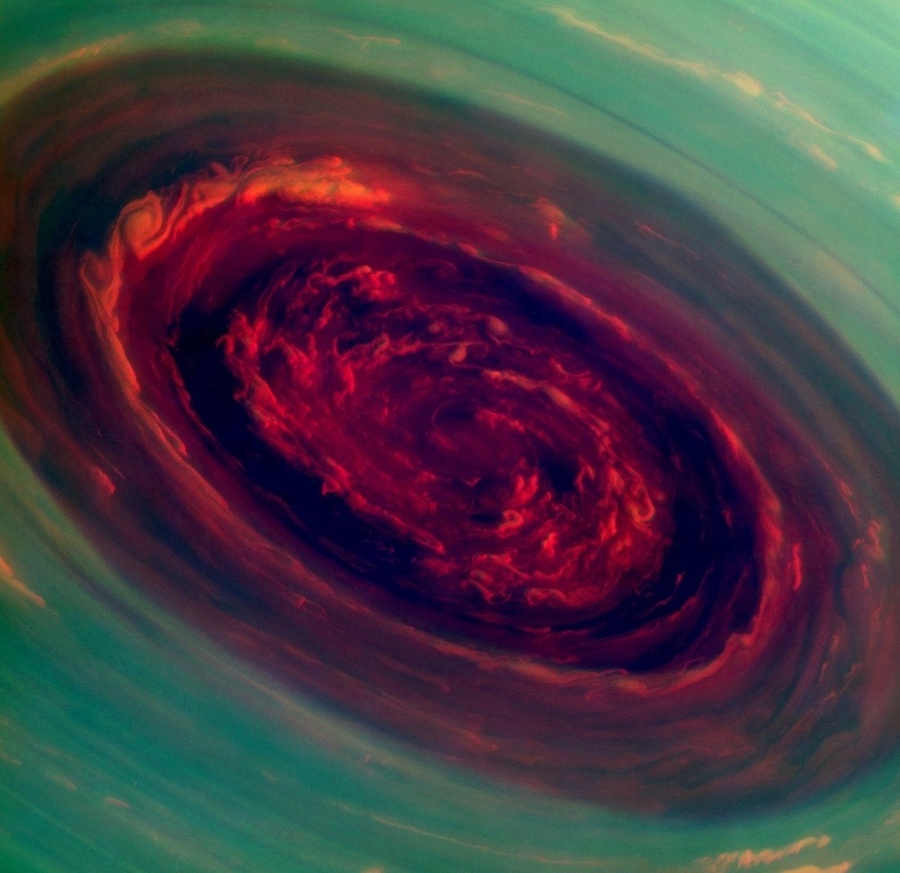Saturn Shows Off A Massive Spinning Vortex: The Rose
Geege Schuman stashed this in Science Too
Stashed in: Science!, The Universe, Images!, Awesome, NASA, space, NASA to Me
NASA is calling it By any other name, it's a mammoth storm on Saturn's north pole. Its eye spans an estimated 1,250 miles — 20 times the size of an average hurricane's eye on Earth. Winds in the Saturn storm's eye wall are believed to be four times as fast.
The stunning image of the spinning vortex was given "false colors" to emphasize low clouds (in red) versus high clouds (in green). NASA estimates that the clouds at the outer edge are moving at up to 330 miles per hour.
"The hurricane swirls inside a large, mysterious, six-sided weather pattern known as the hexagon," . The space agency's analysts say the storm has likely been swirling in the same spot for years — because it's on a pole, there's nowhere for it to drift.

A huge storm is seen on Saturn's north pole, in this color image from NASA's Cassini spacecraft. NASA used red, green and blue spectral filters "to create this natural-color view, which is what the human eye would see if we were there at Saturn."
NASA's Cassini spacecraft captured the image, one of the first to offer a high-resolution detailed view of Saturn's north pole. Having passed through its equinox in 2009, the pole is now in sunlight.
Because it takes Saturn about 30 years to orbit the sun, its equinox comes "roughly every 15 Earth years," according to NASA. The last sunlit images of Saturn's north pole were taken back in 1981, by Voyager 2, the agency says. But its view wasn't as good as Cassini's.
"Such a stunning and mesmerizing view of the hurricane-like storm at the north pole is only possible because Cassini is on a sportier course, with orbits tilted to loop the spacecraft above and below Saturn's equatorial plane," says Cassini deputy project scientist Scott Edgington, of NASA's Jet Propulsion Laboratory in Pasadena, Calif.
NASA says it can change Cassini's orbit every few years — but as you might imagine, it's not as easy as flicking a finger to tilt a hat to a jaunty angle.
"Because the spacecraft uses flybys of Saturn's moon Titan to change the angle of its orbit," the agency says, "the inclined trajectories require attentive oversight from navigators."
Back in the summer of 2004, Cassini became the first spacecraft to enter Saturn's orbit, as NPR's Richard Harris reported. To get there, Cassini traveled 2.2 billion miles.
Unbelievable.











4:59 PM Apr 29 2013